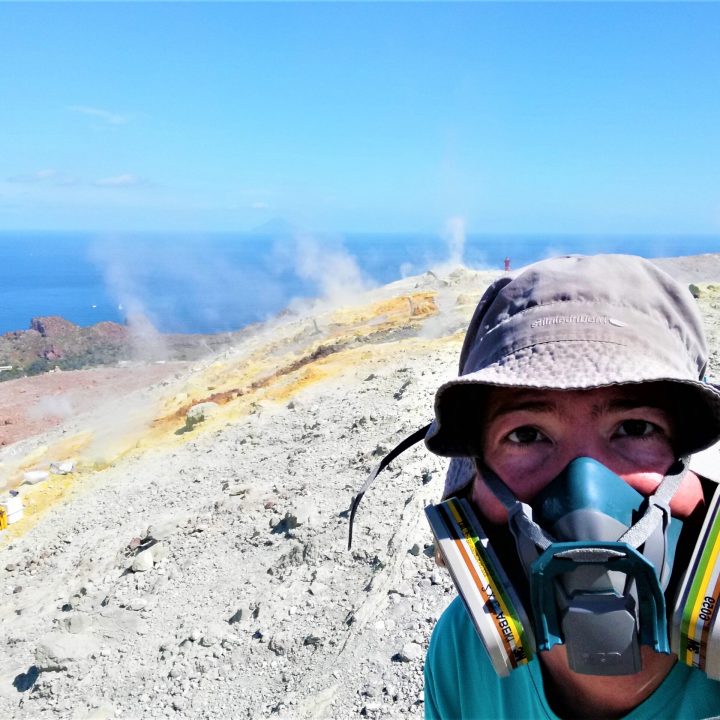Dr Tjarda Roberts – Bronze Medal Award from the CNRS 2020.
CNRS Researcher at the Laboratory of Physics and Chemistry of the Environment and Space (LPC2E), Orléans, France.
- PhD from the University of Cambridge, UK : 2009
- Marie Sklodowska Curie Training Fellowship at the Norwegian Polar Institute, Tromso, Norway and Guest Lecturer UNIS, Svalbard : 2009-2012
- Postdoc Labex Voltaire at LPC2E and University of Orléans : 2012-2016
- CNRS Researcher : 2016
- ANR consortium projet on volcanic halogens : 2018
Originating from the north of England, I moved south to the University of Cambridge for my undergraduate and masters degrees in Natural Sciences (2003). I’ve always been attracted to the gaps between subjects, where there seems so much still to discover. By studying maths, physics, chemistry and geology, augmented by hands-on training-by-research in Arctic geosciences at UNIS, Svalbard, I stumbled into atmospheric chemistry, and eventually volcanology. I continued at the University of Cambridge to do my PhD (2009) investigating the atmospheric chemistry of volcanic emissions, particularly focused on volcanic halogens. Volcanoes release vast quantities of halogen gases as well as sulfur. It had been discovered that these halogens are not simply washed out of the atmosphere as was previously assumed, but can become transformed into reactive forms. To investigate this phenomenon, I developed miniature gas sensing instruments to characterise the emissions and created a numerical model of the volcanic plume chemistry. My model predicted that the plume halogen chemistry causes destruction of tropospheric ozone downwind from the volcano. Excitingly, a year later, aircraft measurements identified depletion of tropospheric ozone during the 2010 eruption of the Icelandic Eyjafjallajökull volcano. But by that time I was already in Norway as a postdoc fellow and Guest Lecturer on Arctic pollution. The opportunity to focus my research once again on volcanic halogens came in 2012 in the form of a postdoc offer from LPC2E, funded by Labex Voltaire. Working with my Orléanais colleagues, industry partner Alphasense, and wider national and international collaborators, I pursued further model-measurement studies, including characterizing the role of volcanic aerosols whose surfaces catalyse the halogen reactions and quantifying the regional-scale impacts of volcanic halogens on atmospheric composition. I gained my CNRS post as Chargée de Recherche in 2016 and in 2018 obtained ANR-funding for an interdisciplinary consortium project involving five laboratories (LPC2E, ISTO, LATMOS, CNRM, IMPMC) to trace volcanic halogens behaviour from the deep mantle to the upper atmosphere.
I’m excited and honoured to receive this Medaille de Bronze from the CNRS as a recognition of my research achievements, and it brings an extra motivation to continue these activities.

